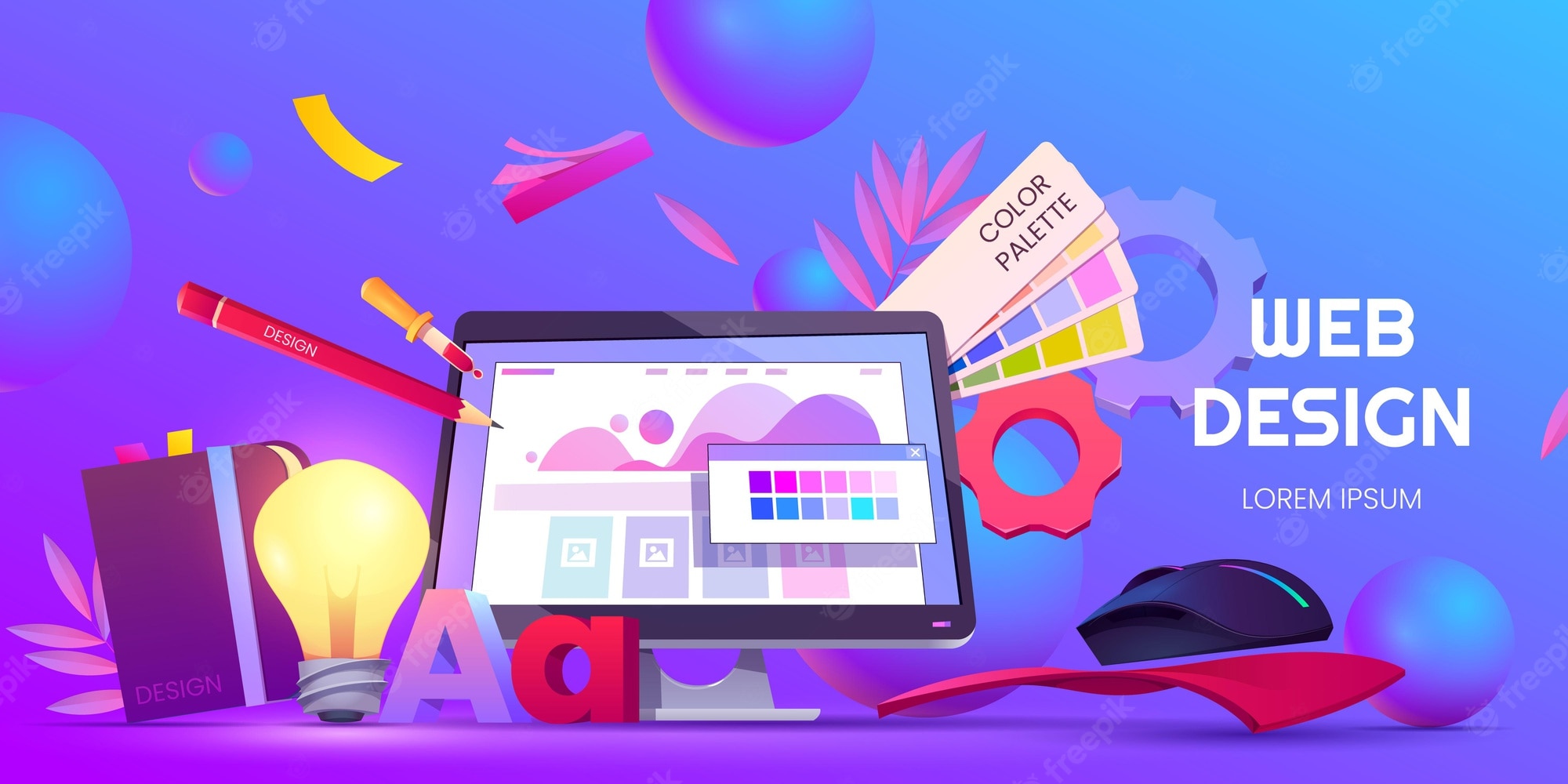The importance of responsive layouts explained by a top web design company
Wiki Article
The Significance of User Experience in Effective Web Design Techniques
User experience (UX) works as a foundation in efficient web design techniques. It shapes how customers communicate with a website, affecting their fulfillment and chance of returning. A well-designed UX can enhance engagement with intuitive navigating and responsive layouts. Ignoring these facets might lead to irritation and boosted bounce rates. Recognizing the intricacies of UX is crucial for designers intending to develop engaging digital experiences that reverberate with diverse target markets. What aspects really drive successful user involvement?Recognizing User Experience and Its Influence On Style
User experience (UX) is usually perceived as a plain element of internet design, it essentially shapes how users connect with a site. UX incorporates all aspects of the user's interaction, consisting of use, access, and overall contentment. A favorable UX cultivates interaction, urging customers to discover the website and return in the future. On the other hand, a negative experience can bring about aggravation, causing high bounce prices and lost chances for conversion.Style aspects like layout, material, and navigation organization play critical duties in forming this experience. Effective UX layout anticipates user demands and choices, guaranteeing that details is aesthetically enticing and quickly accessible. In addition, understanding user behavior with analytics can give beneficial insights, notifying style choices that improve functionality. Eventually, a detailed understanding of UX allows designers to develop sites that not just attract users yet additionally promote significant interactions that align with business goals and user assumptions.
Trick Concepts of Effective User Experience
Effective user experience rests on numerous vital concepts that improve website performance and engagement. User-friendly navigation style, responsive design fundamentals, and the importance of visual pecking order are essential aspects that contribute to a smooth interaction in between individuals and web content. Recognizing these principles enables designers to create more accessible and straightforward digital environments.Intuitive Navigation Layout
User-friendly navigation style serves as a crucial portal to their overall experience when individuals experience a website. Effective navigation enables customers to easily find the info they look for, improving their communication with the website. Trick concepts include clear labeling, rational company, and regular positioning of navigation elements. Tags ought to be simple, enabling customers to forecast the web content they will certainly find. A well-structured pecking order helps users understand the connection in between various sections, guiding them through the website seamlessly. In addition, responsive food selections and quickly available web links add to a fluid experience across tools. By prioritizing intuitive navigation, developers can considerably minimize user stress and boost engagement, ultimately cultivating a positive understanding of the internet site and its material.Responsive Layout Basics
A well-structured navigation system naturally brings about the demand for a receptive design, which is necessary in today's varied digital landscape. A responsive design guarantees that websites feature seamlessly across numerous gadgets, consisting of mobile phones, desktops, and tablets. This flexibility improves user experience by enabling content to be conveniently obtainable and visually coherent, despite screen size. Trick concepts of responsive style consist of fluid grids, flexible pictures, and media inquiries, which assist in ideal viewing. In addition, focusing on touch-friendly aspects enhances interaction on mobile phones. By carrying out a responsive layout, designers can fit customers' requirements, minimize bounce prices, and boost interaction. Eventually, a well-executed responsive design promotes a favorable user experience, motivating site visitors to explore the website better.Visual Power Structure Relevance
Visual pecking order plays an important role in guiding individuals through an internet site, guaranteeing that critical details records their attention. By strategically using size, shade, comparison, and spacing, developers can produce a clear path for users to comply with. Larger aspects often attract the eye, showing their importance, while contrasting shades can highlight contact us to action. Additionally, constant alignment and collection of associated web content improve understanding, making navigation user-friendly. Efficient use aesthetic power structure not just improves use but likewise supports the general visual of the site, promoting a favorable user experience. When individuals can quickly determine one of the most crucial details, they are much more likely to engage with the content, bring about enhanced contentment and interaction with the web site.The Duty of Functionality in Web Design
Use plays a crucial role in web design, particularly through navigating simpleness and adherence to ease of access standards. Effective navigation boosts user fulfillment by permitting visitors to find details promptly and intuitively. On the other hand, meeting accessibility requirements assures that all users, regardless of their capabilities, can effectively interact with the site.Navigating Simpleness
Simplicity in navigating stands as a keystone of effective web design, substantially influencing user experience. A structured navigation system allows users to discover info quickly and without effort, lowering stress and boosting contentment. Clear labeling and sensible structure are crucial components, guiding users effortlessly through the web site. Repetitive web links or extremely complex menus can disorient users, causing increased bounce rates. In addition, mobile responsiveness has to be considered, guaranteeing navigation stays simple across gadgets. Focusing on crucial pages and lessening mess additionally supports user involvement. Effective navigating not only promotes a positive experience but likewise motivates users to discover the website more completely, eventually bring about higher conversion prices. In this respect, navigating simplicity functions as an important consider the general efficiency of web design strategies.Availability Criteria
User interaction is significantly boosted when sites stick to accessibility standards, making certain that all customers, despite their capabilities, can navigate and engage properly. Compliance with these criteria not just broadens the target market yet additionally improves general user contentment. Available layout integrates features such as message choices for photos, keyboard navigation, and adequate color contrast, which help with use by individuals with handicaps. On top of that, applying these requirements can positively influence seo (SEARCH ENGINE OPTIMIZATION) by improving website framework and clarity. As web design evolves, prioritizing access becomes crucial in promoting an inclusive electronic atmosphere. By accepting these criteria, developers contribute to an extra equitable net, eventually driving user loyalty and involvement.Significance of Responsive Layout for User Engagement
As customers significantly access sites through a variety of gadgets, the relevance of receptive design comes to be critical for involving users efficiently. Receptive style web design company warranties that a website adjusts seamlessly to various screen sizes, providing an optimal viewing experience regardless of the tool utilized. This adaptability improves user involvement by assisting in much easier navigation and interaction with content.When users run into a site that is receptive, they are more probable to stay much longer, explore additionally, and return in the future. A well-designed receptive layout minimizes the irritation typically associated with zooming and scrolling on smaller sized screens, thereby lowering bounce prices. Furthermore, responsive layout can favorably influence search engine positions, as internet search engine focus on mobile-friendly websites. In today's electronic landscape, where mobile use remains to increase, carrying out responsive style is not simply valuable, yet crucial for preserving user interaction and guaranteeing a favorable experience throughout all gadgets.
Enhancing Load Times for Better User Complete Satisfaction

To boost lots times, internet designers ought to prioritize optimizing pictures, leveraging internet browser caching, and decreasing HTTP demands. In addition, utilizing Web content Shipment Networks (CDNs) can accelerate content shipment by dispersing it across various geographic locations. Enhancing code, such as pressing CSS and JavaScript data, even more adds to faster loading speeds.
Inevitably, a dedication to enhancing tons times not only improves user satisfaction yet also strengthens brand loyalty and improves the probability of repeat brows through. A swift, smooth experience is important for keeping individuals and promoting favorable communications.
The Influence of Visual Pecking Order on User Communication
Aesthetic power structure offers as a crucial component in directing user interaction on a web site. By arranging material in a manner that prioritizes information aesthetically, developers can influence how users browse and involve with a website. This pecking order is established with numerous layout methods, including dimension, contrast, spacing, and color. Larger typefaces or strong shades draw attention to important aspects, such as telephone calls to activity or headings, while suppressed shades and smaller sized font styles can indicate subordinate info.Effective visual pecking order assists individuals promptly recognize what is most vital, reducing cognitive lots and enhancing use. It enables instinctive navigating, making it less complicated for users to find what they require without disappointment. As users engage with an internet site, a well-structured visual power structure fosters a much more satisfying experience, eventually leading to greater engagement and conversion prices. Developers must focus on these concepts to create a reliable and user-centered web environment.
Measuring User Experience: Methods and tools

Frequently Asked Inquiries
Just How Can I Improve My Site's User Experience on a Budget plan?
To improve an internet site's user experience on a budget plan, one can optimize page load speed, simplify navigating, implement receptive layout, boost material clarity, and collect user feedback for continual refinements, ensuring a satisfying site visitor experience.What Are Usual User Experience Errors to Stay Clear Of in Web Design?
Common user experience mistakes in web design include cluttered formats, bad navigating, slow-moving packing times, lack of mobile responsiveness, ignoring availability, inconsistent branding, and falling short to focus on user responses - Web Design services. Each can considerably prevent general site performance
Exactly how Typically Should I Update My Site for Better User Experience?
Sites should be updated routinely, preferably every couple of months, to preserve perfect user experience. Regular updates help address functionality problems, freshen material, and adapt to altering user requirements, guaranteeing the website continues to be engaging and relevant.
Can User Experience Impact Search Engine Optimization Rankings on My Website?
User experience can substantially impact SEO rankings, as internet search engine prioritize internet sites that offer seamless navigating, quick filling times, and interesting material. A positive user experience can cause lower bounce prices and greater search presence.What Role Does Access Play in User Experience Design?
Availability plays an important role in user experience design by making certain that all individuals, despite capabilities, can connect and browse with a site effectively. This inclusivity boosts overall complete satisfaction and engagement among diverse users.User experience (UX) is commonly regarded as a simple element of internet design, it fundamentally forms how users interact with an internet site. User engagement is substantially boosted when websites adhere to ease of access criteria, making sure that all users, regardless of their abilities, can browse and interact efficiently. Measuring user experience (UX) is vital for comprehending just how effectively a website meets the requirements of its individuals. Additionally, functionality testing, where actual customers navigate the site while observers note difficulties, supplies direct comments on user experience. Usual user experience blunders in internet style include messy designs, bad navigation, slow loading times, absence of mobile responsiveness, neglecting availability, irregular branding, and failing to focus on user responses.
Report this wiki page